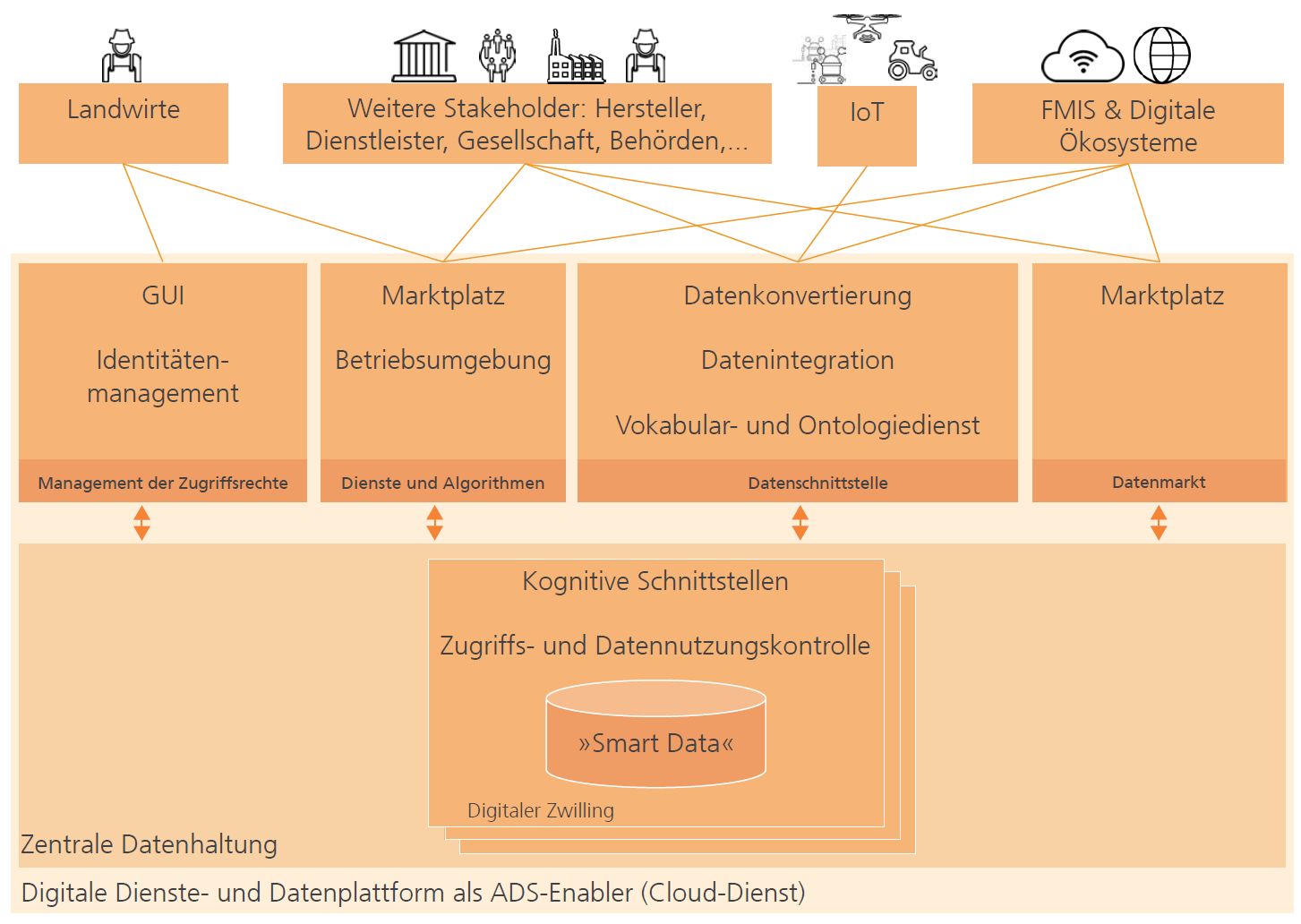Data and services in agriculture
On a technical level, the digital transformation of agriculture demands the availability of environment, operational, machinery and process data in digital form so that software-based products and services can be integrated smoothly and ultimately work effectively.
Agricultural operating data available in digital form are intended to support decision-making. In order to accomplish this, agricultural operating and environmental data need to be recorded automatically using highly modern sensors followed by their evaluation, analysis and cognitive processing in working and business processes so that sustainable, fact-based decisions can be made in the management of field work and animal husbandry.
An Agricultural Data Space (ADS) can be created and used for this purpose enabling secure federal data usage.
Conceptual design of the ADS in the Fraunhofer lighthouse project “Cognitive Agriculture”
In the Fraunhofer lighthouse project “COGNAC”, the participating Fraunhofer Institutes are conceiving an integrated digital platform for information-based (cognitive) agriculture based on the International Data Spaces concepts and testing it in field trials. The goal is to identify ways of linking the numerous individual solutions and making them consistently useable as a whole in order to attain maximum productivity and sustainability. While the value chain begins with agricultural production and animal husbandry, it prospectively includes subsequent process steps and stations in the value network.
Aside from the Agricultural Data Space, the project is also intended to supply crucial information in the areas of novel sensors and innovative automation concepts.
Status and results
The domain-specific market conditions and market requirements were recorded in a first step. This among other things revealed a demand for greater data sovereignty for farmers. The International Data Spaces concepts suitably address these requirements and offer possible solutions. Special challenges and a need for adaptation are found among others in the area of interoperability, for example also regarding the complexity and heterogeneity of existing solutions. The resulting consequences for an Agricultural Data Space were documented in a white paper (download). A more comprehensive architecture document will be available soon.
The concepts are being tested and evaluated successively in a prototype implementation with various concrete application scenarios.
Key function blocks of a platform incorporating the ADS are shown in the following illustration.
 International Data Spaces
International Data Spaces
